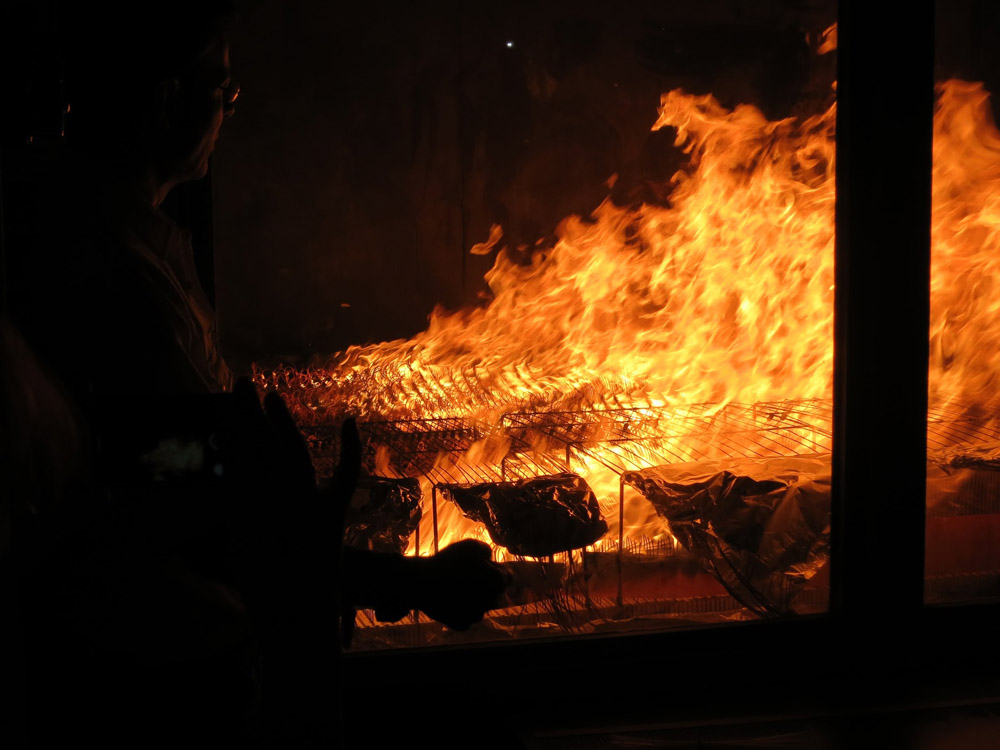
A new study about the physics of how a wildfire spreads has been completed by government employees, and thankfully it is freely available to taxpayers. A success for Open Access to the products of government-funded research!
The phrase “spreads like wildfire” is well-known but until recent discoveries through experiments conducted by scientists from the Missoula Fire Sciences Laboratory, University of Maryland and the University of Kentucky, it wasn’t well-known how wildfires actually spread. Specifically, it was unclear how radiation and convection heat transfer processes, which both occur in wildfires, are organized to produce wildfire spread. Now, evidence presented in a new study, Role of buoyant flame dynamics in wildfire spread, reveals how flame dynamics that produce and transport convective heat effectively governs the spread of wildfire.
Previous studies focused mainly on radiant heat so little was known about the respective roles of convection and radiation on fire spread and most often the assumption was made that radiant heat was the governing factor. But scientists recently found that the net rates of heat transferred by radiation are insufficient because the fine fuel particles that constitute wildland vegetation cool efficiently by convection until contacted by flame.
As stated in the study, “if radiation itself is insufficient to account for fire spread…convection must provide the explanation.” So a team of scientists, led by Mark Finney of the USDA Forest Service Rocky Mountain Research Station, began looking at flame dynamics.
Utilizing specialized burn chambers and wind tunnels at the Missoula Fire Sciences Lab and the University of Maryland, scientists were able to assimilate and measure flame dynamics. They found this process can correctly scale up to those found in large-scale wildfires. They also conducted outdoor experiments and prescribed fires at Camp Swift, TX. The experiments led to the discovery of previously unrecognized flame behaviors and how those behaviors cause wildfires to spread. They also discovered that flame vorticity (circulations) and instabilities due to the buoyancy of flame gasses, cause wildfires to spread by forcing flames downward into the fuel bed and bursting forward ahead of the fire into fresh fuel (grass, brush, etc.).
“This study opens the door into the little known world of flame dynamics and gets us closer to understanding the complexities of radiative and convective heat and how they affect wildfire spread,” said Finney. The information obtained through this research is significant with the potential to:
- Improve firefighter safety by providing better training to recognize and anticipate wildfire behavior
- Simplify the physical principles of wildfire spread that can lead to the development of improved prediction models, and,
- Improve the ability to mitigate fuel hazards by accurately modeling and describing fuel contribution to wildfires
The team of ten scientists who contributed to this study comes from the USDA Forest Service Rocky Mountain Research Station’s Missoula Fire Sciences Lab – lead scientist Mark Finney, Ph.D., the University of Maryland’s Department of Fire Protection Engineering – lead scientist Michael Gollner, Ph.D., and the University of Kentucky’s Department of Mechanical Engineering – lead scientist Kozo Saito, Ph.D.
Six brief videos supporting the research are available, but you have to download them onto your device in order to view them.
The study is available as a free .pdf download at WildfireToday/Documents.
